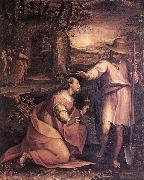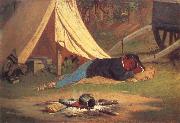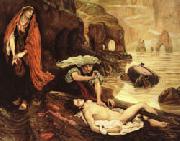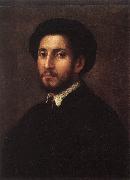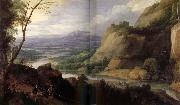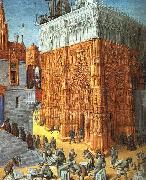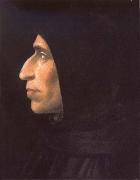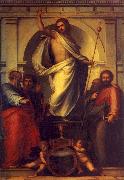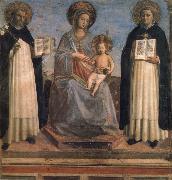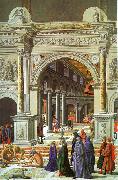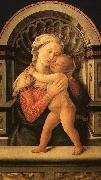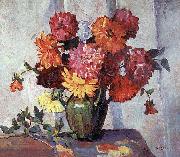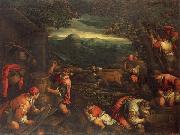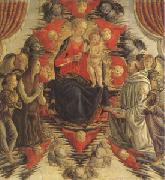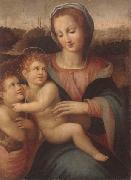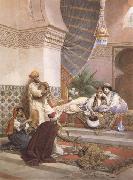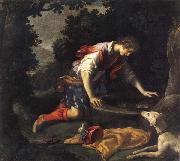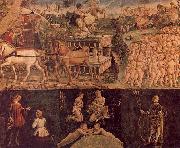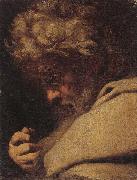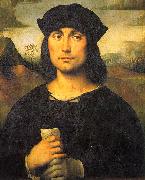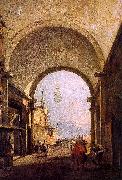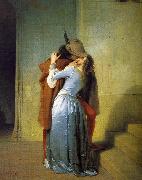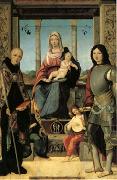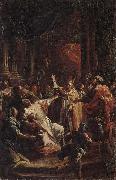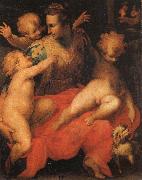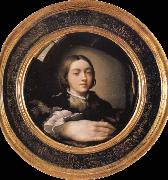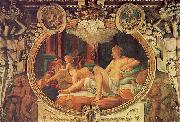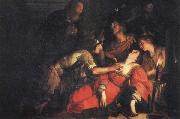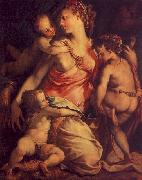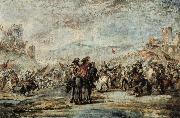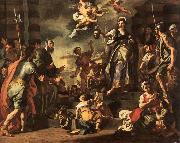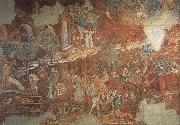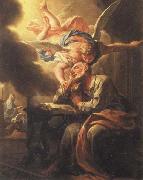|
|
|
|
|
|
|
|
|
|
|
|
|
|
|
|
|
|
 |
Fra Angelico
|
|
Fra Angelico Galleries
b.c. 1400, Vicchio, Florence
d.Feb. 18, 1455, Rome
|
|
|
|
|
|
|
|
|
|
|
|
|
|
|
|
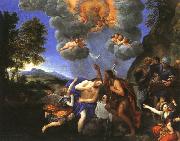 |
Francesco Albani
|
|
(March 17 or August 17, 1578 COctober 4, 1660) was an Italian Baroque painter.
Born at Bologna, his father was a silk merchant who intended to instruct his son in the same trade; but by age twelve, Albani became an apprentice under the competent mannerist painter Denis Calvaert, where he met Guido Reni. Soon he followed Reni to the so-called "Academy" run by the Carracci family: Annibale, Agostino, and Ludovico. This studio fostered the careers of many painters of the Bolognese school, including Domenichino, Massari, Viola, Lanfranco, Giovanni Francesco Grimaldi, Pietro Faccini, Remigio Cantagallina, and Reni.
In the year 1600, Albani moved to Rome to work in the fresco decoration of the gallery of the Palazzo Farnese, being completed by the studio of Annibale Carracci. Rome, under Clement VIII Aldobrandini (1592-1605) was exhibiting some degree of administrative stability and renewed artistic patronage. While pope Clement was born from a Florentine family residing in Urbino, his family was allied by marriage to the Emilia-Romagna and the Farnese, since Ranuccio I Farnese, Duke of Parma had married Margherita Aldobrandini. Parma, like Bologna, are part of the Region of Emilia-Romagna. Thus it was not surprise that Cardinal Odoarde Farnese, Ranuccio's brother, chose the Carraccis from Bologna for patronage, thereby establishing Bolognese predominance of Roman fresco painting for nearly two decades. |
|
|
|
|
|
|
|
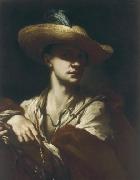 |
Francesco Caccianiga
|
|
Francesco Caccianiga (1700-1781) was an Italian painter and engraver.
He was born in Milan. In Bologna, he became a pupil of Marcantonio Franceschini. He afterwards visited Rome, where he established himself under the patronage of Prince Borghese, for whom he executed some considerable works in the Palazzo and the Villa Borghese. His principal works are at Ancona, where he painted several altar-pieces, among them, Marriage of the Virgin and Last Supper. |
|
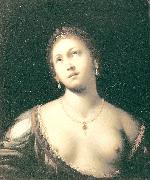 |
Francesco Cairo
|
|
(1607-1665) was an Italian painter active in Baroque Lombardy and Piedmont.
He was born and died in Milan. It is not known where he obtained his early training though he is strongly influenced by the circle of il Morazzone, in works such as the Saint Teresa altarpiece in the Certosa di Pavia.
In 1633, Cairo moved to Turin to work as a court painter, including portraits, to Vittorio Amedeo I of the House of Savoy. Between 1637-1638, Cairo travelled to Rome, where he encounters the works of Pietro da Cortona, Guido Reni and of the Caravaggisti. He returns to Lombardy to complete altarpieces for the Certosa of Pavia and a church at Casalpusterlengo. He painted a St. Theresa for San Carlo in Venice. Between 1646-1649, he returns to Turin, and paints an altarpiece for Savigliano and the church of San Salvario. He is also known as Il Cavaliere del Cairo, because in Turin, he received the order of SS. Lazarus and Maurice in recognition of his merit.
Many of his works are eccentric depictions of religious ecstasies; the saints appear liquefied and contorted by piety. He often caps them with exuberant, oriental turbans. |
|
|
|
 |
Francesco Cozza
|
|
1605-1682)was an Italian painter of the Baroque period.
He was born in Stilo in Calabria and died in Rome. As a young man, he went to Rome and apprenticed with Domenichino. He traveled with Domenichino to Naples.
He is best known for his expansive panegyric ceiling fresco, Apotheosis of Pamphili House, in the library of Palazzo Pamphili in Piazza Navona (1667-73). He also frescoed the Stanza del Fuoco in Palazzo Pamphili in Valmontone, 1658-59), where he worked along with Pier Francesco Mola, Gaspar Dughet, Mattia Preti, Giovanni Battista Tassi (il Cortonese), and Guglielmo Cortese. He also participated with Carlo Maratta and Domenico Maria Canuti in fresco decorations of the Palazzo Altieri. His landscape paintings recall the Carracci style of paesi con figure piccole (landscapes with small figures). He painted a Madonna del Riscatto in church of Santa Francesca Romana. He was received into the Accademia di San Luca at Rome in 1650. |
|
|
|
|
|
|
|
|
|
|
|
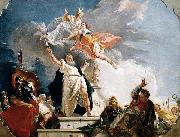 |
Francesco Fontebasso
|
|
(4 October 1707 - 31 May 1769) was an Italian painter painter of the late-Baroque or Rococo period of Venice. He first apprenticed with Sebastiano Ricci, but was strongly influenced by his contemporary, Giovanni Battista Tiepolo. In 1761, Fontebasso visited Saint Petersburg and produced ceiling paintings and decorations for the Winter Palace. Fontebasso returned to Venice in 1768. He helped decorate a chapel in San Francesco della Vigna.
He died in Venice in 1769.
|
|
|
|
|
|
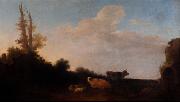 |
Francesco Giuseppe Casanova
|
|
(1727-1803) was an Italian painter and a younger brother of Giacomo Casanova.
Francesco Casanova Battaglia di cavalleria (oil on canvas, Louvre, Paris)Born in London, he trained in Venice under Francesco Guardi, then was a pupil of Francesco Simonini, a battle painter who took Borgognone as his model. Besides battle-pieces Casanova painted landscapes with figures and cattle, as well as pastoral subjects. He arrived in Paris in 1751, and went to Dresden in the following year, where he remained until 1757, spending his time in copying the finest battle-pieces of the famous Electoral Gallery. On his return to Paris he studied for a time under Charles Parrocel, and was received into the Academy in 1763. He exhibited at the Salon at intervals from that year till 1783, when he again quit France, going to Vienna, where he resided during the remainder of his life. Philip James de Loutherbourg was his pupil for a time.
|
|
|
|
 |
Francesco Guarino
|
|
(1611-1651 or 1654) was an Italian painter of the Baroque period, active mainly in the mountainous area east of Naples called Irpinia, and in other areas of Campania, Puglia, and Molise.
Francesco Guarino, Saint Agnes, 1650.He was born in Sant'Andrea Apostolo, today a frazione of Solofra in the Province of Avellino, Campania, and died in Gravina di Puglia. He was a pupil first locally of his father, Giovanni Tommaso Guarino, then moved to Naples to work in the studio of Massimo Stanzione. In Naples, like many of his contemporaries in Naples, he was influenced by the style of Caravaggio. Among his masterpieces are the works for the Collegiata di San Michele Arcangelo to Solofra.
|
|
|
|
 |
Francesco Maria Raineri
|
|
(February 2, 1676 - February 28, 1758) was an Italian painter of the late-Baroque, mainly active in Mantua.
Also called Lo Schivenoglia after the town, just outside of the city of Mantua, of his birth. He was a pupil of Giovanni Canti. Among his works, he was known for his paintings of battle scenes, landscapes, and cappriccios (vedute of imaginary scenes) with historical or mythologic figures. He was named director of the Academy of painters in Mantua in 1752. He is known to have painted a St. Sebastian for the chapel of Santa Anna. |
|
|
|
|
|
|
|
|
|
|
|
|
|
|
|
|
|
|
|
|
|
|
|
|
|
|
|








